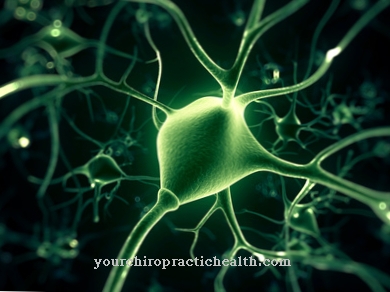Language development is essential for humans to be able to communicate with the social environment. However, it is inconceivable without the simultaneous development of the ability to speak and the establishment of non-verbal relationships with objects, people and actions. Parents and other caregivers can sustainably support the child in their language development. Disturbances in language development can lead to massive problems and put a lot of psychological stress on the child.
What is language development?

Language development and speech development run parallel to each other. The word language development describes the ability to learn language and use it meaningfully. It refers either to the mother tongue or to two languages if the child grows up with more than one language.
The child's language development runs parallel to the development of the speaking instruments lips, tongue, larynx and palate. Parents and other caregivers pick up on their child's attempts to speak by repeating wrong syllables, words and incorrectly pronounced things and putting them in the right context.
As part of its language development, the child learns the rules of the phonetic system, more and more words, grammatical rules and related expressions. At a later stage in language development, it can describe certain events, objects and people. In children raised bilingually, the development of the second language is similar to that of the first. Sometimes one language makes it easier to learn the other more quickly.
Language development proceeds in the same order for all children, although there are individual differences in the speed at which they learn language. The phases of language development vary in terms of their length and severity. Not only individual factors are decisive, but also to what extent and in what way parents encourage their child's language development.
Function & task
The aim of language and speech development is to acquire linguistic (communicative) competence. It encompasses all non-verbal and verbal skills that are used to convey your thoughts, feelings and intentions to other people. The development of language and speaking skills is necessary in order not to have to rely on other people who have to replace the inadequate personal communication.
The first attempts at language development can be seen in the infant. He screams in different ways when he wants to be caressed or fed. A slightly more developed attempt of the child to communicate with other people later consists of, for example, pointing a finger at the desired object.
The prerequisites for normal speech development are a normally developed voice, good hearing and the ability to move the mouth in the same way as the infant has previously practiced while eating.
By naming objects in the form of nouns, the child appropriates these objects. Claims expressed verbally as a syllable are initially ambiguous. For example, "there" can mean "put it there" or "give it to me". With the help of non-verbal communication, which the child optimizes in parallel to language development, it learns to meaningfully link verbal expressions, actions and objects. Relationships in terms of content arise. The cognitive horizon of experience is expanded. Even before they say the first word, the child understands different words, as they have had their first experiences in everyday life with what the words denote.
For this reason, play and social behavior are essential additions to children's language development. It takes place in phases that are associated with a certain age of the child: screaming from birth, babbling and cooing from the 2nd month of life and echoing sounds (chattering vowels) and the formation of syllables from the 4th month of life ("dada"). From the 6th month of life, the child's mouth movements are more targeted because they are better at sucking, swallowing and chewing. From the 8th month on, the toddler understands a few words and tries to behave accordingly.
You can find your medication here
➔ Medicines to improve concentration and language skillsIllnesses & ailments
Children whose language development is encouraged by their parents and other caregivers are less likely to have language problems than children whose language education is neglected. The need to use language to communicate early on, for example because there is no sibling who could "lose weight" communicatively, can lead to accelerated language development.
In the case of language development disorders, a distinction is made between the language development delay and the actual language development disorder (SES, USES). Speech development delay means that the child is more than 6 months late in the age-usual speech development. A language development disorder, on the other hand, shows itself in the incorrect course of language development. There are receptive language development disorders - they affect one's own speech perception - and expressive language development disorders. They relate to the linguistic utterances.
Disturbed language development can be seen, for example, in the use of incorrect sounds (phonetic-phonological SES), incorrect words (lexical-semantic SES) and incorrect grammar (morpho-syntactic SES). In the pragmatic-communicative language development disorder, there is stuttering, stammering and other language disorders. Usually several areas are affected at the same time: Instead of -j, for example, -l is said (wrong sound formation) and the article is forgotten (wrong grammar).
If the parents discover a speech development disorder in their child, they should contact a pediatrician. He first examines the little patient for physical causes of the speech development disorder. Then there is an assessment of the child's cognitive development and overall development. The earlier the child receives speech therapy, the greater the therapeutic success.
























.jpg)



